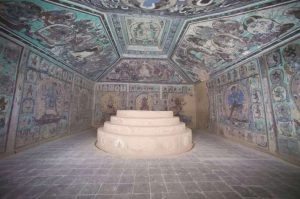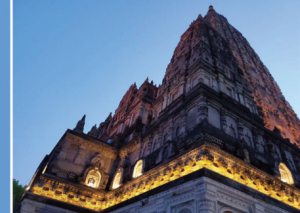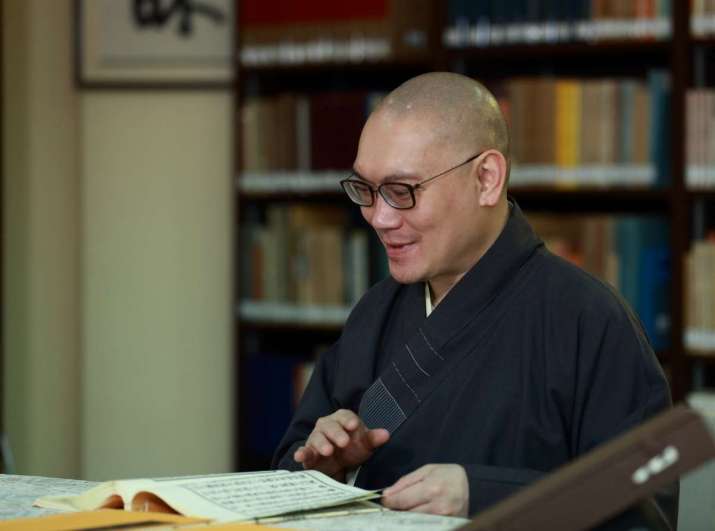
Every five years, the grandest of all Chinese Mahayana rituals is performed at Tung Lin Kok Yuen Canada Society (TLKY CS) in Vancouver, with this year marking the temple’s 25th anniversary. The ceremony’s full name is the Great Assembly to Liberate All Beings of Water and Land (法界聖凡水陸普度大齋勝會). The Chinese shorthand is shuilu fahui (水陸法會), which corresponds to “Water Land Dharma Assembly,” although I prefer to simply use shuilu fahui as the least inaccurate shorthand. Held over seven days and nights, with a large contingent of monastics attending to separate auxiliary ceremonies across seven adorned altars*, the shuilu fahui enjoys a celebrated and intricate place in Chinese Buddhist liturgy, society, and culture. The shuilu fahui is, through its ritual and historical complexity, perhaps the pinnacle example of Chinese Buddhism’s unique spirit.
Most broadly and symbolically, the ritual reenacts the quintessential aspiration that all beings attain bodhi (the mind of enlightenment). A 1924 ritual text** by the modern codifier of the ritual, Master Fayu (dates unknown), narrows down the technical function of the Dharma ceremony to be one “. . . that invites all enlightened and unenlightened beings to attend a ceremony and share a great meal, focusing not only on food bestowal but also on the reciting of many sutras and mantras, and the preaching of a sermon to all sentient beings attending the ceremony, in the hope of saving all sentient beings and helping them finally escape from samsara.” (Yiu 2008, 91)
It is a multi-tradition ritual, deploying scriptures, incantations, and repentance rites from the eight extant schools of Chinese Buddhism for a dazzling array of transmundane power, thaumaturgical wonder, and esoteric mystery. It summons the sacrality of the Tiantai’s Lotus Sutra, the Avatamsaka Sutra of the Huayan, the Pure Land tradition’s Amitabha Sutra, and the Sutra of Perfect Enlightenment of Chan, while also enacting the Tiantai ritual of “Saving and Feeding the Burning-mouth Hungry Ghosts” (pretas; yankou) (Yiu 2008, 96)—all while coexisting with the final objective of sending this cosmic multitude of beings to be reborn in the Western Pure Land of Amitabha Buddha. (Yiu 2008, 92–4)
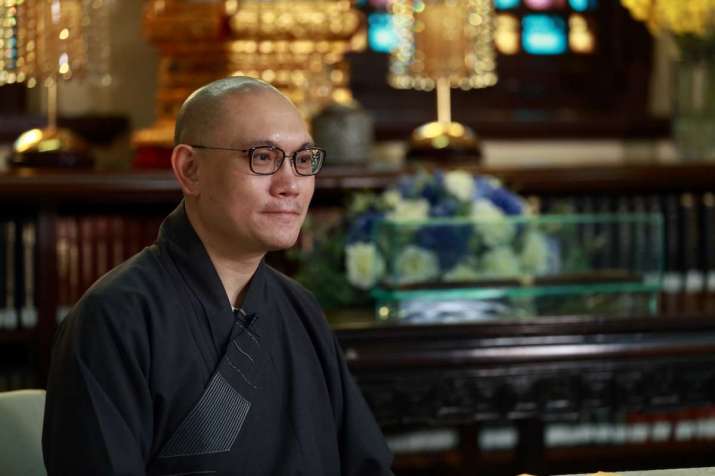
When Ven. Tsang Chit (abbot of Tung Lin Kok Yuen in Hong Kong) and our editorial team met to discuss the shuilu fahui early this month, he was already busy making preparations that will continue well into June, until the shuilu fahui proper in TLKY CS from 9 to 16 June. Until then, an advance ceremony is being held at the Hong Kong Tung Lin Kok Yuen temple from 26 to 30 April in support of this significant anniversary for its Canadian counterpart. Ven. Tsang Chit noted that TLKY CS, as per its founder Mr. Robert Ho’s hope and vision, needed to serve the needs of everyone who came to the temple to learn the Dharma. Even if the liturgical language was Chinese, it was important that the shuilu fahui was comprehensible in both spirit and execution to all Vancouverites and a broader, international attendance.
The misty origins of the shuilu fahui can be traced back to antecedent ceremonies that operated as offerings to spirits or the deceased. These activities had permeated Chinese spiritual life for millennia. Ven. Yifa tracks the earliest extant text to use the term “shuilu” or “water and land” to the monastic chronicler Zunshi (964–1032). In his Shishi zhengming, Zunshi mentions tablets with “shuilu” inscriptions being erected at temples in what is today’s Yangzi River delta, although the meaning of shuilu at this time did not yet denote the deliverance of beings in the sea and on land. (Yifa 2002, 291) By the ninth century, early mentions of this ritual proliferated through epigraphy, biographies, manuals, and supernatural tales (Bloom 2013, 98–101), and in diverse regions of China like Sichuan and Ningbo in Zhejiang, although the liturgical texts that might have informed the shuilu fahui from this time are long lost.
While the shuilu fahui is associated with Emperor Wu of Liang (464–549), a celebrated chakravartin (Buddhist monarch) in the Chinese mold, this was a conscious narrative shaped by monastic communities and ecclesiastic writers over centuries. The faction that played by far the most important part in this was the Jinshan historiographical tradition. (Stevenson 2001, 43–45) As Daniel Stevenson notes: “Many of the earliest Song accounts of the shuilu are connected in one way or another with Jinshan, the island in the lower Yangzi where Emperor Wu is alleged to have convened the first shuilu performance.” (2001, 43) The Jinshan monastic complex therefore served as the mythic center and source of the shuilu fahui, along with the story of Emperor Wu’s dream and his corresponding establishment of the ceremony.
The shuilu fahui was also intimately connected to the medieval Chan school. Ceremonies were recorded to have been held early on in Chan strongholds like the Tiantong, Lingyi, Lingzhi, and Tianzhu monasteries. The Japanese monk-pilgrim Essai (1141–1214) visited China in the late twelfth century and included shuilu chambers as regular features of the Song Dynasty’s Chan monastic institutions. (Stevenson 2001, 66) Indeed, it was during the Song dynasty that the central apocryphal narrative grew around the shuilu fahui, In particular, Tiantai historiographer Zhipan (ca. 1220–75) contributed greatly to prescribing the doxology, or liturgical formulae, of contemporary shuilu fahui. Zhipan’s six-fascicle Fajie shengfan shuilu shenghui xiuzhai yigui (法界聖凡水陸勝會修齋儀軌), with major revisions by the Ming-era (1368–1644) reformer Zhuhong (1535–1615), remains the core text describing the components of the shuilu fahui today. (Bloom 2013, 40)
There are many subtle variations of this ceremony depending on the temple, and TLKY CS has its own sequence and doxology.*** (for an excellent description of the overall trajectory of contemporary shuilu fahui practice, see Bloom 2013, 40–52) It is pan-lineage and is therefore very popular in the Sinophone world—in Hong Kong alone, since 1991, a shuilu fahui was organized by at least three monasteries each year, and by 2004 seven monasteries throughout the city were hosting the seven-day ceremony. (Yiu 2008, 92) The logistics for a typical shuilu fahui today are significant, and many temples devote significant time and resources to the years-long transmission of the knowledge for conducting this ritual, such as selecting a trained main cantor (zhenbiao, 正表) and the assistant cantor (zhubiao, 助表). (Yiu 2008, 103)
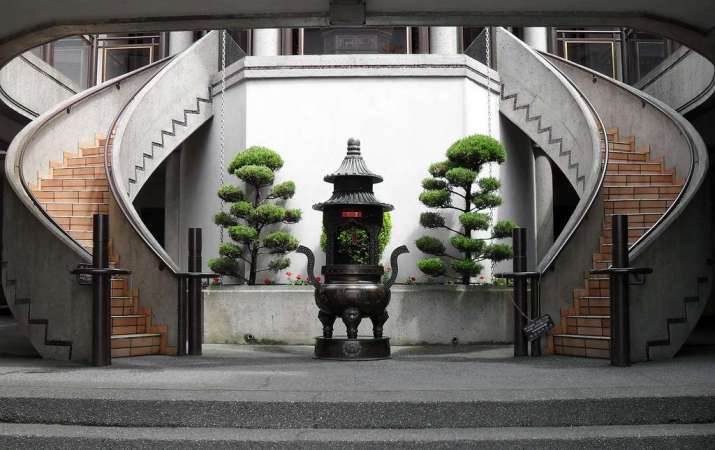
In the case of TLKY CS’s shuilu fahui this June, Ven. Tsang Chit said that there will be a total of more than 70 monks (variously from Canada, Hong Kong, Malaysia, Taiwan, and Mainland China) officiating. “The scale of this ceremony requires considerable numbers of volunteers. We have volunteers and devotees at TLKY CS, but there are also those from Hong Kong who want to contribute to this important anniversary: around 30 in total,” he noted. “Some temples might see this as relatively small-scale, but we see the sincere aspiration of volunteering and contributing to be significant already, given the laypeople’s secular obligations and preoccupations.”
Ven. Tsang Chit also outlined some practical challenges for officiants and volunteers at the shuilu fahui, highlighting that the time difference between Vancouver and Hong Kong could be a cause of tiredness for the monastics. They would have already meticulously prepared for the assembly over the past few months before boarding the plane, and are expected to be at peak ritual performance for the entire seven days. “The monastics have it tough during the Vancouver midday,” he said sympathetically. “They will have to maximize their rest time and be mindful that their physical state doesn’t affect their recitation of the memorized liturgy. The lay volunteers are wonderful and commit themselves completely to making the seven-day ceremony run smoothly. Part of this is having entered a prepared state of mind before setting off to Vancouver.”
At both the philosophical and logistical level, the sheer scale and magnificence of the shuilu fahui is aimed at elevating the human spirit into a state that is expansive enough to participate in a divine summoning of effectively innumerable categories of beings. “When you awaken the heart of bodhi,” counsels Ven. Tsang Chit, “you’ll naturally align yourself with the right attitude of doing things, whether in this ceremony or in any context amidst everyday life.” It is in the simple act of awakening the heart of bodhi (“fa pu ti xin,” or simply “fa xin”) that one’s commitment empowers one to accomplish truly meaningful things, including the completion of the prodigious shuilu fahui.
This authenticity of Dharma rites and faithfulness to liturgical orthodoxy will be accessible to the public in TLKY CS this June, and in the context of this 25th anniversary, I believe that the shuilu fahui will be a profound reaffirmation of the service TLKY CS has provided over the decades as a pillar of the Canadian and global Buddhist community.
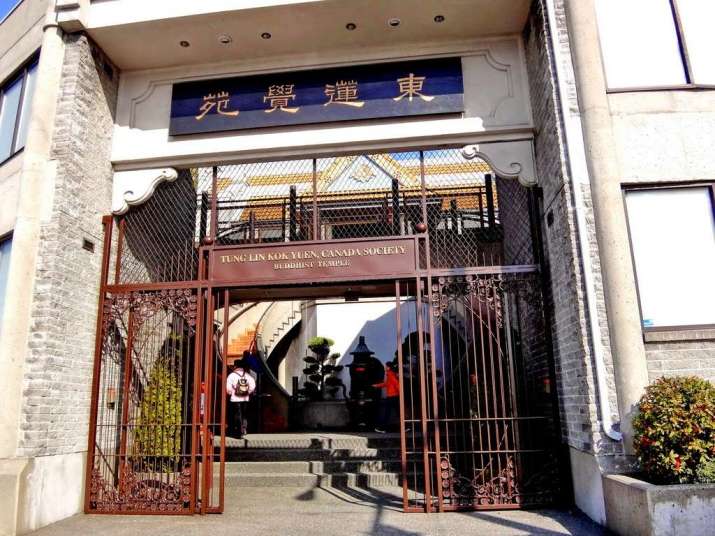
* Altar layout
The core procedure is performed at the Inner Altar while six rituals, which range from repentances to sutra recitation, are performed at the Outer Altar’s six purpose-built platforms for attendees and all beings.
Inner Altar—the Inner Altar is divided into the Upper Hall and the Lower Hall. The chief liturgist or cantor, who enters into deep contemplation and visualization, leads the ceremony within. The Upper Hall encompasses the summoning of beings that share a positive connection to the Buddha: the Buddhas, the Dharma, bodhisattvas, pratekyabuddhas, sravakas, patriarchs, spirits and immortals of the five penetrations (wutong; referring to folkloric conceptions of five magical powers), devarajas and devas, spirit kings (protective deities, including protectors of monasteries and relics and protectors of the state and cities), and the Ten Great Masters of the shuilu fahui, ten historical or mytho-historical figures associated with the earliest performance of by Emperor Wu and its Song-era codification. (Bloom 2013, 41–45)
The Lower Hall is the receptacle for beings who have a more distant relationship to the Buddhist faith. They include: deities of the celestial bureaucracy, such as the constellations and planets, deities of the terrestrial bureaucracy (gods of earth, mountains, and rivers officials of the human bureaucracy, including Confucian and Daoist figures, humans of various occupations, asuras, hungry ghosts, and wandering spirits, the Ten Kings of Purgatory and their attendants,
denizens of the hell realms, animals, creatures awaiting rebirth, spirits of the deceased members of the sponsor’s family, and spirits of the deceased clergy and laity of the monastery. (Bloom 2013, 46–47)
Outer Altar—the Outer Altar is used for the performance of repentances and sutra recitations subordinate to those being held in the Inner Altar. They are not mentioned in Zhipan and Zhuhong’s manual, but are outlined in detail the Shuilu yigui huiben, which was first compiled in the Qing dynasty by Yirun Yuanhong (ca. early 19th century). (Bloom 2013, 51)
Great Altar—also known as the Emperor Liang Altar, this is where the Lianghuang baochan (Repentance Rite of Emperor Liang) is recited during the first four days Then the Diamond Sutra is recited on the fifth day, the Sutra of the Medicine Buddha on the sixth, and the final fascicle of the Brahma’s Net Sutra on the seventh and final day.
Altar of Reciting the Surangama Sutra—reflection on the luminous purity of all beings and cultivating wholesome views on their behalf.
Altar of Reciting the Lotus Sutra—to demonstrate the meritorious power of Shakyamuni Buddha and inspire attendees to strive for Buddhahood.
Altar of the Pure Land—this altar is devoted to reciting the name of Amitabha Buddha and visualizing his form and that of the Pure Land.
Altar of Reading the Avatamsaka Sutra—the altar at which monks recite Avatamsaka Sutra or Huayan jing.
Altar of “Saving and Feeding the Burning-mouth Hungry Ghosts”—this altar is devoted to making offerings to the yankou, a unique vision of the pretas (otherwise known as hungry ghosts) as possessing mouths of fire.
** The Fajie shengfan shuilu pudu dazhai shenghu yigui huiben (法界聖凡水陸普度大齋勝會儀軌會本)
*** Ritual schedule
Day 1: Mandala’s purification by sprinkling—the Outer Altar is purified and consecrated with incense and holy water. The primary Mahayana scriptures are recited.
Day 2: Consecration of the Inner Altar—the Inner Altar is purified and secured in anticipation of summoning four supramundane and six mundane beings from the tenfold Dharma Realm for universal offerings.
Day 3: Assembly of the Enlightened Beings to the Upper Hall of the Inner Altar—the saints, masters, and religious ancestors (the bodhisattvas, pratyekabuddhas, arhats, Chinese Buddhist patriarchs, divine protectors of the Triple Gem) are summoned to the Upper Hall. The six offerings (reflecting the Six Perfections) are established: incense, flowers, lights, food, jewels, and the Dharma.
Day 4: Writs of Amnesty—unenlightened beings are temporarily released from the supervision of the divine ministries of the heavens, atmosphere, earth, and underworld, and then escorted to the sanctum, the shuilu fahui’s location.
Day 5: Assembly of the Unenlightened Beings to the Lower Hall of the Inner Altar—the unenlightened beings are summoned to the Lower Hall. The Dharma is preached to them by the officiating monks, and through their confessions and taking refuge in the Triple Gem and undertaking of the bodhisattva precepts, they are freed from all defilements.
Day 6: Presenting Universal Offerings to the Beings of the Lower Hall and the Offering to Yankou at the Outer Altar—with great compassion (mahakaruna), offerings are made to beings of the six mundane realms: devas, humans, asuras, pretas (hungry ghosts), hell beings, and animals.
Day 7: Liberation of All Beings of Water and Land—the climax of the ceremony and completion of dedications and transferences of merit to all sentient beings of water and land, dedicating to them wishes that they will be liberated from samsara and reborn in the Pure Land.
References
Bloom, Phillip Emmanual. 2013. Descent of the Deities: The Water-Land Retreat and the Transformation of the Visual Culture of Song-Dynasty (960-1279) Buddhism. Doctoral dissertation, Harvard University. Article accessible at: http://nrs.harvard.edu/urn-3:HUL.InstRepos:11107804
Makita Tairyō. 1957. “Suirikue shōkō,” in Chūgoku kinsei bukkyōshi kenkyū. Kyoto: Heirakuji Shoten. 169–93
Daniel B. Stevenson. 2001. “Text, Image, and Transformation in the History of the Shuilu fahui, the Buddhist Rite for Deliverance of Creatures of Water and Land,” in Cultural Intersections in Later Chinese Buddhism. Edited by Marsha Weidner. Honolulu: University of Hawaii Press.
Yifa. 2002. The Origins of Buddhist Monastic Codes in China: An Annotated Translation. Honolulu: University of Hawaii Press.
Yiu Kwan Chan. 2008. “Popular Buddhist Ritual in Contemporary Hong Kong: Shuilu Fahui, a Buddhist Rite for Saving All Sentient Beings of Water Land,” in Buddhist Studies Review 25 (1). 90–105. Accessible at: https://journals.equinoxpub.com/BSR/article/view/4765/3092
This article is part of “Buddhism in the People’s Republic,” a special project focusing on the schools of Mahayana Buddhism in contemporary China. Through this project, Buddhistdoor Global’s editorial team and expert contributors aim to provide a concise, insightful, and informative overview of the history of contemporary Chinese Buddhism, and the modern practices and influences that are shaping the changing face of modern China.





